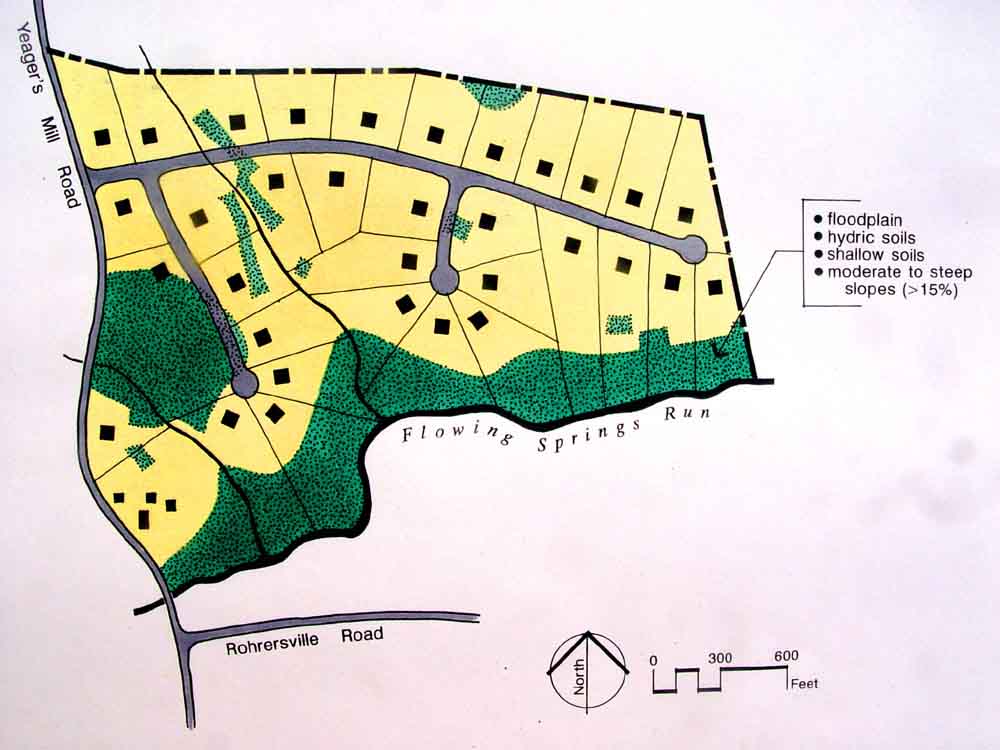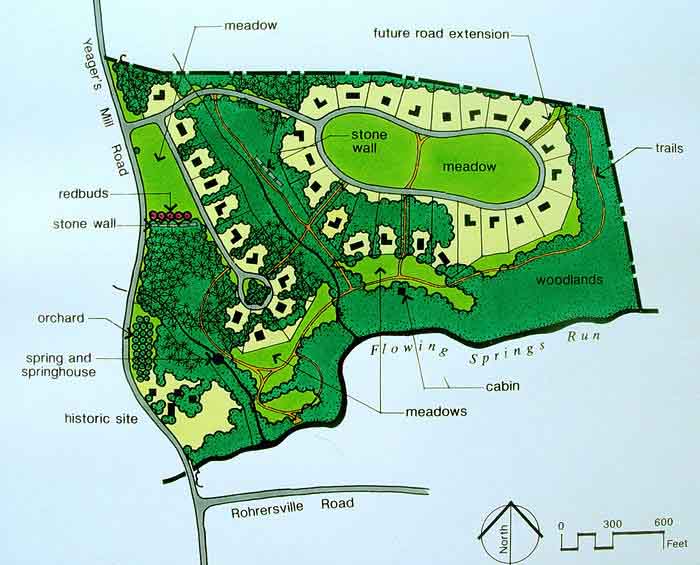 |
|||||||||||||||||
 |
|
||||||||||||||||
 Copyright 2007 LandChoices - All Rights Reserved |
"Supersize My Backyard" LandChoices' Grassroots Campaign Aims to Re-invent the American Subdivision to Connect Families with Nature From Families First Monthly magazine, April/May, 2008 issue Cookie cutter residential subdivisions simply aren't the only option in new housing, argues national conservation group LandChoices (www.landchoices.org). In fact, the grassroots organization based in Milford, Michigan has just launched a "Supersize My Backyard" campaign to shatter the notion that conventional style subdivision developments need to be the American standard, when better, less invasive methods exist. "Most people, especially those looking to build their dream home, just assume their land choices are limited to a little square plot in a sparsely-treed subdivision,? said Kirt Manecke, LandChoices' founder and president. "We want to give families and communities better options." "Supersize My Backyard" provides individuals and community leaders with easy, affordable and actionable information on how to create "conservation subdivisions" -- subdivisions that offer a balanced approach to development while preserving 40-70 percent of buildable land, in addition to unbuildable wetlands, steep slopes and floodplains. "My childhood backyard was surrounded by a beautiful forest and apple orchard, where my mother and I would spend hours hiking and walking our dogs," Manecke said. "LandChoices wants to show people that this type of living is still attainable, even in well developed neighborhoods." The "Supersize My Backyard" campaign also seeks to dispel the myth among planners and developers that conservation subdivisions are costly and less profitable than standard subdivisions. In fact, according to a study by Wayne State University (Detroit, MI), conservation subdivisions are more profitable, less costly and faster selling than their conventional counterparts. The Cedar Valley Ridge environmentally designed residential community, located in Grand Traverse County, has over half the lots sold. Sales are currently continuing, at a time when sales in the rest of the real estate market is slow. "The study shows that lots in conservation subdivisions sold in about half the time as lots in conventional subs," said Manecke. "In addition, developers are realizing premiums of $13,000 to $18,000 per acre for lots in conservation subdivisions (over those in standard subdivisions)." LandChoices' advisory group member and conservation subdivision developer Eve Noonan confirmed the study results. "As architects and planners we designed and are building a conservation subdivision to offer an alternative to conventional overdevelopment. Like noted planner Randall Arendt, we were convinced that families would be excited about living in houses surrounded by conserved prairie, mature forests and restored natural wetlands. We are pleased that over 70 families now own at Tryon Farm. And we have visitors who come from all over the country to ask questions or share ideas about building green in their communities. The Farm is a happy place; good for those who live here, good for Mother Nature and good for the pocketbook!" said Noonan. Noonan's Tryon Farm development in Michigan City, Ind. preserved 120 acres of a 170-acre former dairy farm. LandChoices is offering both individuals and community planners a free, one-page fact sheet (www.landchoices.org/campaign.htm) that outlines the benefits of conservation subdivisions, along with a link to help them bring conservation subdivisions to their communities. Images courtesy - Randall Arendt, "Growing Greener: Putting Conservation into Local Plans and Codes", Island Press, 1999 |
||||||||||||||||
| Preserve Your Land | Conservation Subdivisions | Other Choices Home | About Us | News | Projects | Sponsors | Contribute | Contact Us | Links | Kids | Media Kit LandChoices • P.O. Box 181 • Milford, MI 48381 • info@landchoices.org Privacy Statement | www.landchoices.org |
|||||||||||||||||





